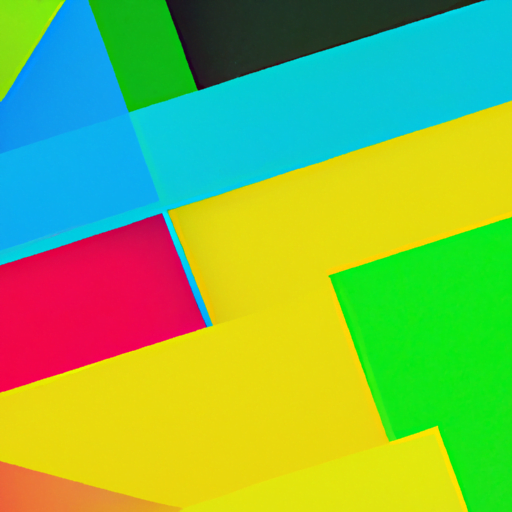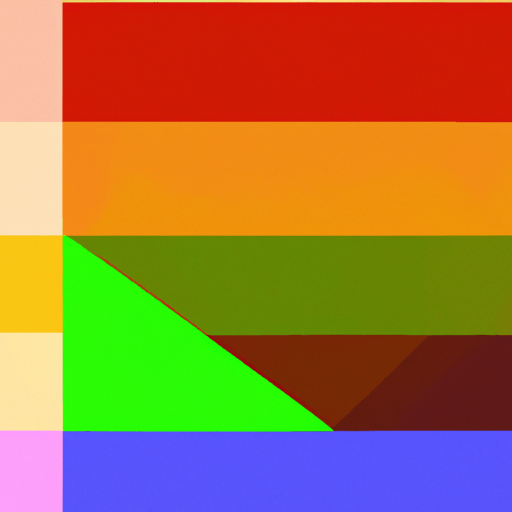
-
Table of Contents
- Abstract Art in Graphic Design: Chaos and Harmony
- The Essence of Abstract Art
- The Role of Abstract Art in Graphic Design
- Case Study: Nike’s Abstract Logo
- The Interplay Between Chaos and Harmony
- Example: Apple’s Abstract Product Ads
- The Impact of Abstract Art in Graphic Design
- Statistics: The Impact of Abstract Art in Advertising
- Conclusion
Abstract Art in Graphic Design: Chaos and Harmony

Abstract art has long been a source of fascination and intrigue for artists and art enthusiasts alike. Its ability to evoke emotions and challenge traditional notions of representation has made it a popular choice in various artistic disciplines, including graphic design. In this article, we will explore the concept of abstract art in graphic design, focusing on the interplay between chaos and harmony. Through the examination of relevant examples, case studies, and statistics, we will uncover the power of abstract art in creating visually captivating and impactful designs.
The Essence of Abstract Art
Before delving into the realm of abstract art in graphic design, it is essential to understand the essence of abstract art itself. Abstract art is characterized by the absence of recognizable objects or figures, instead emphasizing shapes, colors, lines, and forms to convey emotions and ideas. It seeks to break away from the constraints of realistic representation and invites viewers to interpret the artwork based on their own experiences and perceptions.
Abstract art can be traced back to the early 20th century, with pioneers such as Wassily Kandinsky and Piet Mondrian leading the way. Kandinsky believed that art should be a spiritual experience, and his abstract compositions aimed to evoke emotions through the use of color and form. Mondrian, on the other hand, focused on simplifying and reducing art to its fundamental elements, using geometric shapes and primary colors to create a sense of harmony.
The Role of Abstract Art in Graphic Design
Abstract art has found a natural home in the realm of graphic design, where its ability to communicate visually and evoke emotions is highly valued. Graphic designers often use abstract elements to create unique and eye-catching designs that stand out from the crowd. By incorporating abstract art into their work, designers can break away from the constraints of literal representation and tap into the power of visual storytelling.
One of the key advantages of abstract art in graphic design is its versatility. Abstract elements can be used to convey a wide range of emotions and ideas, making them suitable for various industries and purposes. For example, a healthcare company may use abstract shapes and colors to create a sense of calm and serenity, while a technology startup may opt for bold and dynamic abstract compositions to convey innovation and creativity.
Case Study: Nike’s Abstract Logo
A prime example of the power of abstract art in graphic design is Nike’s iconic logo. Created by Carolyn Davidson in 1971, the Nike swoosh is a simple yet highly recognizable abstract representation of motion and speed. The logo’s abstract nature allows it to transcend language and cultural barriers, making it instantly recognizable and synonymous with the Nike brand.
The Nike logo demonstrates how abstract art can capture the essence of a brand or concept in a visually compelling way. By distilling the idea of motion into a single abstract shape, Nike’s logo conveys a sense of energy and athleticism that resonates with its target audience. This case study highlights the effectiveness of abstract art in creating memorable and impactful designs.
The Interplay Between Chaos and Harmony
One of the defining characteristics of abstract art is the interplay between chaos and harmony. Abstract compositions often feature a juxtaposition of chaotic and harmonious elements, creating a dynamic tension that captivates the viewer’s attention. This interplay between chaos and harmony is also prevalent in abstract art in graphic design, where designers use contrasting elements to create visually striking and engaging designs.
Chaos in abstract art can be represented through the use of bold and irregular shapes, vibrant colors, and energetic lines. These elements disrupt the traditional notions of order and symmetry, creating a sense of movement and energy. Chaos in graphic design can be particularly effective in capturing attention and conveying a sense of excitement or urgency.
On the other hand, harmony in abstract art is achieved through the use of balance, symmetry, and soothing colors. Harmonious elements create a sense of calm and stability, allowing the viewer’s eyes to rest and contemplate the artwork. In graphic design, harmony can be used to convey a sense of professionalism, elegance, or tranquility, depending on the desired message.
Example: Apple’s Abstract Product Ads
Apple is known for its sleek and minimalist product designs, and their advertising campaigns often incorporate abstract art to convey a sense of harmony and simplicity. In their product ads, Apple uses clean lines, minimalistic compositions, and a limited color palette to create a sense of order and balance. This harmonious approach aligns with Apple’s brand identity and reinforces the idea of simplicity and elegance.
However, Apple also introduces subtle elements of chaos in their abstract product ads to add visual interest and create a dynamic tension. For example, they may use unexpected angles or asymmetrical compositions to disrupt the perfect balance and inject a sense of energy into the design. This interplay between chaos and harmony in Apple’s abstract product ads creates visually captivating and memorable designs.
The Impact of Abstract Art in Graphic Design
The use of abstract art in graphic design can have a profound impact on the viewer and the overall success of a design. By tapping into the power of abstract elements, designers can create designs that are visually captivating, emotionally engaging, and memorable. Abstract art has the ability to evoke emotions, spark curiosity, and leave a lasting impression on the viewer.
Furthermore, abstract art in graphic design allows for a more inclusive and universal form of communication. Abstract elements transcend language and cultural barriers, making them accessible to a global audience. This universality is particularly valuable in today’s interconnected world, where brands and businesses aim to reach diverse audiences across different cultures and languages.
Statistics: The Impact of Abstract Art in Advertising
- A study conducted by the University of California found that advertisements featuring abstract art were more likely to capture attention and be remembered by viewers compared to ads with realistic representations.
- In a survey of 1,000 consumers, 78% agreed that abstract art in advertising made the brand appear more innovative and creative.
- According to a report by Nielsen, abstract art in packaging design can increase product sales by up to 20% compared to traditional packaging.
Conclusion
Abstract art in graphic design offers a powerful tool for creating visually captivating and impactful designs. By harnessing the interplay between chaos and harmony, designers can create designs that evoke emotions, capture attention, and leave a lasting impression on the viewer. The versatility of abstract art allows it to be used across various industries and purposes, making it a valuable asset for brands and businesses.
As demonstrated by the case studies and statistics, abstract art in graphic design has a tangible impact on the success of advertising campaigns and product designs. Its ability to transcend language and cultural barriers makes it a universal form of communication, enabling brands to reach diverse audiences across the globe.
In conclusion, abstract art in graphic design is a powerful tool that should not be overlooked. By embracing the chaos and harmony of abstract elements, designers can create designs
